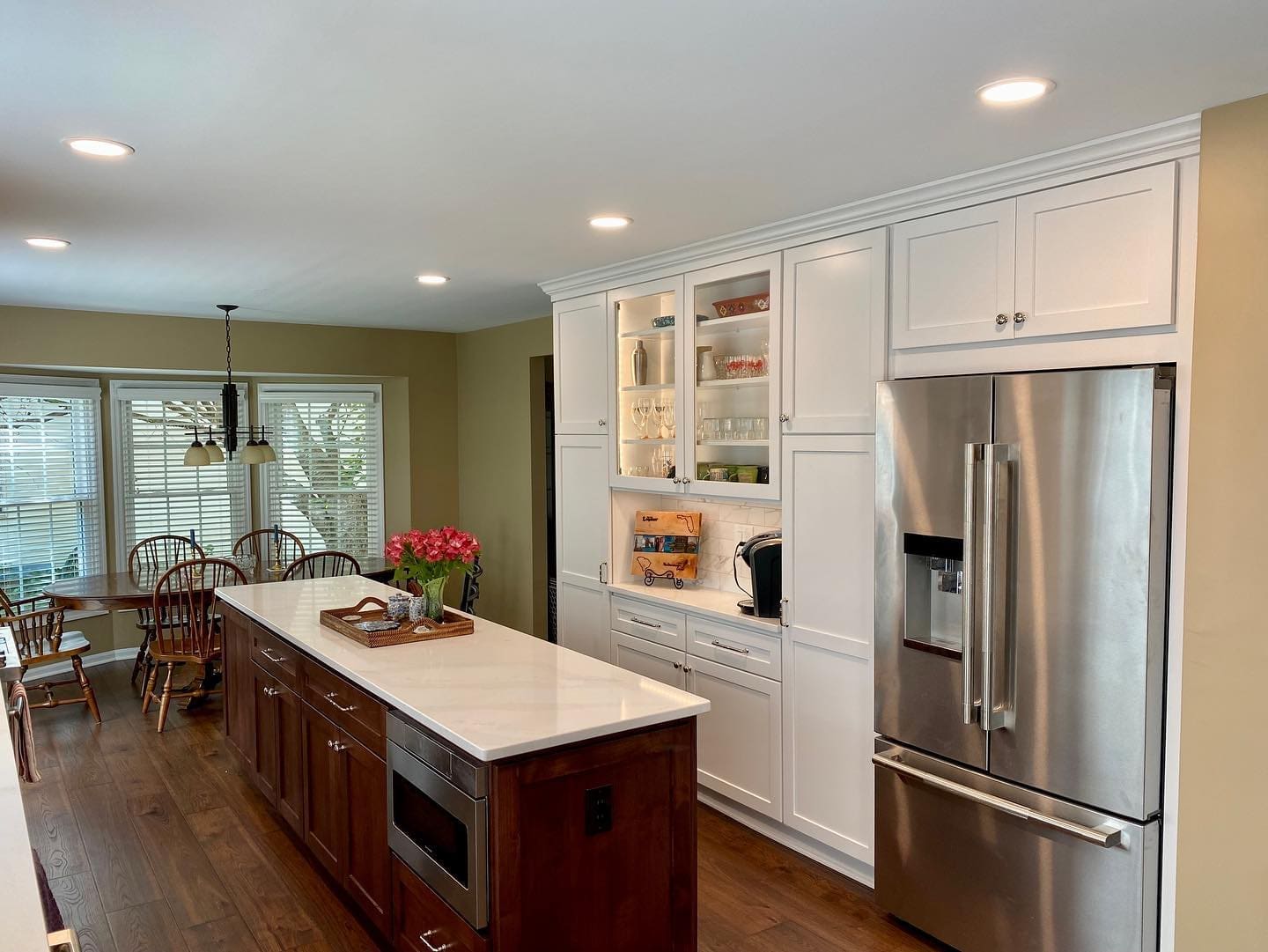Choosing a Kitchen Island Base
It’s fairly safe to say that in our kitchens of Virginia and D.C., the island is firmly rooted as a necessity of style and utility. While this holds as a common trend throughout the States, and has for several years, the kitchen island is as standard as the refrigerator or oven in the Virginia kitchen. What seems to be quite evident is that our Virginia kitchen designers have a firm grasp on tending to the stylistic demands of these islands while equally tending to the functional properties or nature of the entire kitchen space. This characteristic is most firmly noted in how the designer addresses the form and function of the various bases in which the island top rests upon. As diverse and dramatic as the tops have become, the bases follow suit in style and functionality.
The Drama and Simplicity of a Table-top Visual
At first glance, these island bases may appear as if they are modular tables which were, quite frankly, simply placed in the advantageous center of the kitchen space. Boasting four distinct legs or a central pedestal base, these islands tend to appear as if they are only an adjunct to additional countertop needs. Looks are deceiving! Sure, some of these island bases are, in fact, stationed to be modestly modular units which provide an additional cutting surface or food preparation surface, but the majority of these bases are not. While the visual is maintained, the designer strategically integrates a ‘chase’ in the forward side or center of the island base whereby plumbing and electrical sources may be hid. This feature enables the island to be properly fitted with prep sinks, cooktops or electrical outlets, thereby expanding the utility of this table-top appearance into a multi-tasking service area with the casual statement of a modular-appearing table.
Never Enough Storage Space
The more typical and traditional means of addressing the island base is by the utilization of full-sized cabinet bases in support of the island countertop. This tends to be the normal choice for a designer, or homeowner, when the size or layout of the kitchen inhibits adequate cabinet storage space otherwise. It may also tend to those who contend that ‘there’s never enough storage space in a kitchen’. Typically speaking, the bases are mounted back-to-back offering two sides of storage; but it is also quite common to have base end units which add additional storage. As one would assume, the utilities are easily hidden by traditional means within these cabinet bases. The trend in this particular design, worth noting, is that these cabinet bases are of an entirely different finish and design than the cabinets in the balance of the kitchen space; and this, of itself, adds a stylistic dimension not otherwise afforded.
Combination of Styles
What is really trending in our Virginia kitchens is a combination of the two designs, formerly mentioned, which truly marries the aesthetics and serviceability of the island. The ‘working’ side of the island which houses the prep sinks, cutting board and cooktop will be supported by base cabinet units while the opposing side of the island will draw its support from two stationary legs or pediments. In creating an island base, such as this, the designer is opening-up the opportunity for a comfortable sitting area or desk-like service area to a portion of the kitchen island, just slightly away from where the chef is logically doing their task. This casual sitting station becomes the social accoutrement which replaces, or seeks to replace, the necessity of a breakfast bar or nook. The consolidation of effect expressed here is truly a fine means to address the fashion, function and social endeavors of the Virginia kitchen island.






